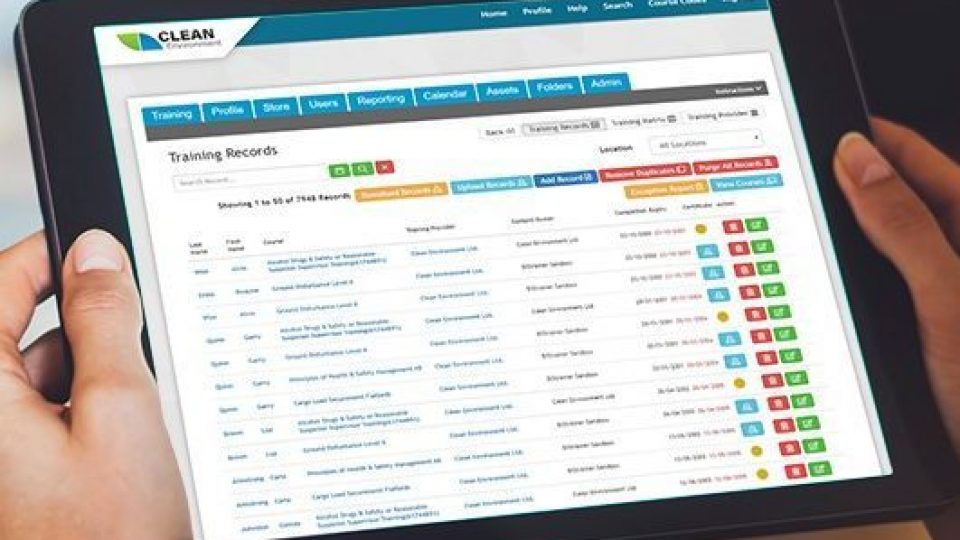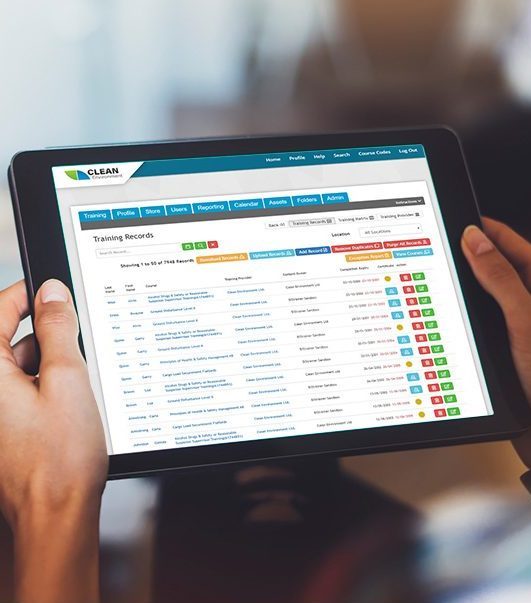
How to Maintain Training Records in the Workplace
No matter what field your company operates in, training will be a key part of ensuring your operations run smoothly. When it comes to industries such as construction, mining, oil & gas, or transportation, this is particularly true. Good quality, in-depth training is essential for achieving a workforce of competent and skilled employees capable of carrying out their duties safely and effectively. But how do you keep track of the training needs of your firm? That often depends on the size of your organization. The way a small family-owned company organizes it’s training records, for example, is likely to differ greatly from the methods employed by a multinational. However, some central principles remain the same, regardless of size, turnover, or the number of employees on your books.
It is imperative to know what training an employee has completed. Proper certificates need to be stored and easily accessible when required. Most training has an expiry date and keeping on top of both company and legal requirements is a necessity for avoiding accidents and maintaining a safe and efficient workforce. If you are a small firm, you may still be managing this process through the use of a spreadsheet. However, handling training records in this way has many limitations and runs the risk of missed requirements. A Training Record Management System (TRMS) is a cloud-based software that manages your workplace’s training records for you. Whether you employ 20 or 2000 people, a TRMS can help you keep track of training records and certificates.
These are some of the best ways to maintain your training records in the workplace…
1. Digitize Your Records
Storing paper records takes up a large amount of space and requires extensive time to file properly. Manually searching for specific records through multiple cabinets upon request can waste hours of valuable company time. Hours have often been lost to tracking down critical documentation that was misfiled or misplaced completely. Digitizing your records ensures files are not misplaced and are accessible on demand. Storing all records and documentation in a cloud-based system allows you to save money on space and time typically allotted to physical paper storage. Sophisticated search functions can locate and produce a document with a few keystrokes and employing the use of an online storage system means you can access this information from your PC, laptop, or mobile device.
2. Automate
One of the main downsides of using a spreadsheet for your company’s training records is the time-intensive labour of ensuring the requirements are satisfied and up to date. Each employee has specific training needs. Overlooking a requirement, or expiration can lead to severe consequences if an avoidable accident occurs. Automating the whole process removes this risk. A Training Matrix allows you to input all the roles in your organization and cross-reference them with the types of training and orientations required for that role. An automated system will assign required training to the relevant people, ensuring every employee in your small or large organization has its requirements to proceed safely. Expiration dates can be tracked and supervisors and employees can be notified of upcoming expiries and auto-assign training to the individual.
3. Use Reporting Functions
Any great training record system will have robust reporting features built-in. It is essential to be able to produce visual reports quickly and easily to give an overview of training gaps. Gap analysis reports help to identify any training that is outstanding so it can easily be adjusted. From a broader perspective, it can highlight if there are issues with training not being completed in specific departments or sites. Having access to detailed, customized reports is invaluable and can identify training gaps and areas where you may be overspending on training. This allows you to redirect resources to where they are most needed.
4. Training Record Management System
A TRMS handles all training needs in one system. It is a cloud-based software that allows you to digitize your existing records quickly via mass upload. All the information you need relating to training will be in one place—accessible from anywhere. It automates the processes that are ordinarily very time-consuming such as identifying who needs what training, when they completed it, or when it is expired. Reporting functions enable you to produce detailed customized reports for insight into how your company’s training. A designated person will still be necessary to oversee your company’s training, however a TRMS allows everyone to share the responsibility by uploading certificates, receiving expiry notifications directly, and completing auto-assigned training promptly.
Maintaining training records in the workplace is essential for the effective operation of any company. Whether you are a small business or a multinational, you need to keep on top of training needs and ensure that all legal requirements are met. Digitizing your records eliminates the need for physical space and saves administrative time on filing and locating documents. Automating this process ensures expiration dates are not missed and relevant employee training can be assigned. Reporting functions allow you to identify any gaps or overspending which a designated employee can adjust. A Training Record Management System combines all these important features into one online system and simplifies the process. The maintenance of training records and certificates is critical to operating a safe and efficient work site.































